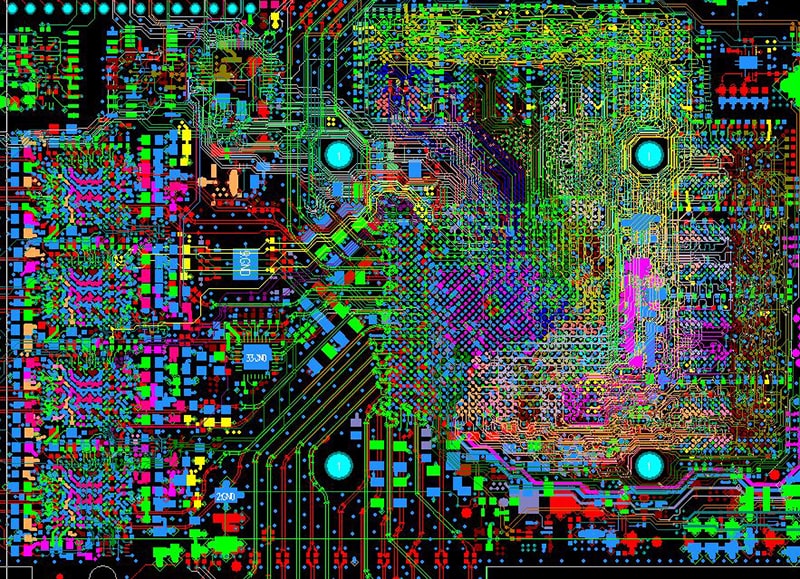The sophistication of designs is growing, which implies engineers must adhere to more regulations. However, this sophistication means that there is a greater opportunity for mistakes. Now, how does a design engineer deal with this? You can manage your design guidelines in one of 2 ways: using built-in constraints management in the ECAD program or using spreadsheets manually or other techniques. Below are five reasons for you to use the built-in guideline managing tool in creating your PCB layout.
1. Functionality
Each design aims towards a similar objective- producing final functional results. As much as this seems to be a straightforward task, PCB designers and electrical engineers consider several variables to create designs that function well.
So each project has its own set of specs. It is for an individual to figure out the mechanism of converting those parameters into design needs by integrating particular technology, required energy, the capacity of moving current, to name a few.
The management of trace widths across design layouts may seem simple. However, for extensive systems with traces in thousands to handle, guidelines rapidly get complicated – particularly if DDR, differential pairs, or sophisticated technologies get incorporated into the mix. With rules, it becomes simpler to handle the needs of your design, consequently resulting in a functioning product.
2. Manufacturability
As soon as you’ve generated a functioning model in the PCB program, you’ll need to manufacture it, leading to the product’s manufacturability. Building a reproducible board requires adherence to the given manufacturer’s parameters and limitations, as well as the PCB source.
These figures are primarily dependent on the technology and competencies of the provider. They will delay the board if you submit it for manufacturing without conforming to the company’s limitations. Depending on a manufacturer’s input, you’re susceptible to getting trapped in a design-fix-redo pattern.
It would be helpful to initiate the production guidelines during the PCB-Design For Manufacturing(DFM) layout process. It will help prevent the design-fix repeat pattern while meeting your TTM (time-to-market) objectives. It would be helpful to consider- fabricating, assembling, and the manufacturing techniques all across the prototyping when integrating DFM.
At the same time, keep records and handle any problems that may arise as production progresses—for instance, acid trapping and tombstoning when soldering owing to the insufficient spacing of parts.
3. Reduction Of Errors
Suppose you managed to maintain and follow all regulations for designing and manufacturing, which is no small feat. You will likely still experience mistakes and inconsistencies involving big designs, as many regulations usually accompany it.
For that matter, many businesses set up reviews of designs. But you’ll still need to personally verify every component and net associated with the layout to ensure that the criteria for tracing width, space, passive components, tracing lengths, and other factors get in place. Several software programs will immediately detect any breaches as long as rules get specified in the layout.
It’s straightforward to evaluate and adapt a layout as required after possible issues get discovered. Suppose you take the traditional procedure for verifying guideline compliance and omit anything, just as any other designer has done at a particular time during their profession. In that case, it may stymie execution and undermine TTM objectives.
4. Helps To Avoid Design Re-Spins
It’s normal to get back to square one for design adjustments when incompatible with production requirements. At times, it’s only a part of your design that requires altering. But more often than not, a single design modification will have a cascading impact. Because the spacing between routing and component placement gets restricted in the designs of today, a change as minimal as extending the distance between components and board edges may have you entirely redesigning your board.
Suppose a board does not perform as expected; it may need a redesign. It’s possible that if you don’t meet design criteria, signal quality may suffer, and the board can fail. You’ve probably spent time manufacturing, testing, and troubleshooting something that will eventually need redesigning.
Nonetheless, this is preventable using given software programs that provide notifications on violations instantaneously, enabling designers to correct mistakes while designing and avoiding design re-spins entirely.
5. Time Efficiency
The above factors distill to one major factor- TIME. It takes lots of time to manage and verify design guidelines manually. If you overlook anything, rethinking the design afresh or redoing the whole plan may cause you to fall behind your rivals in terms of TMT, mainly if you had to redesign after manufacturing, testing, and diagnosis. In the designing phase, the PCB designing program should assist you in managing and identifying any possible issues. Setting up design rules alongside production guidelines in a short period can prove to be time-efficient.



















